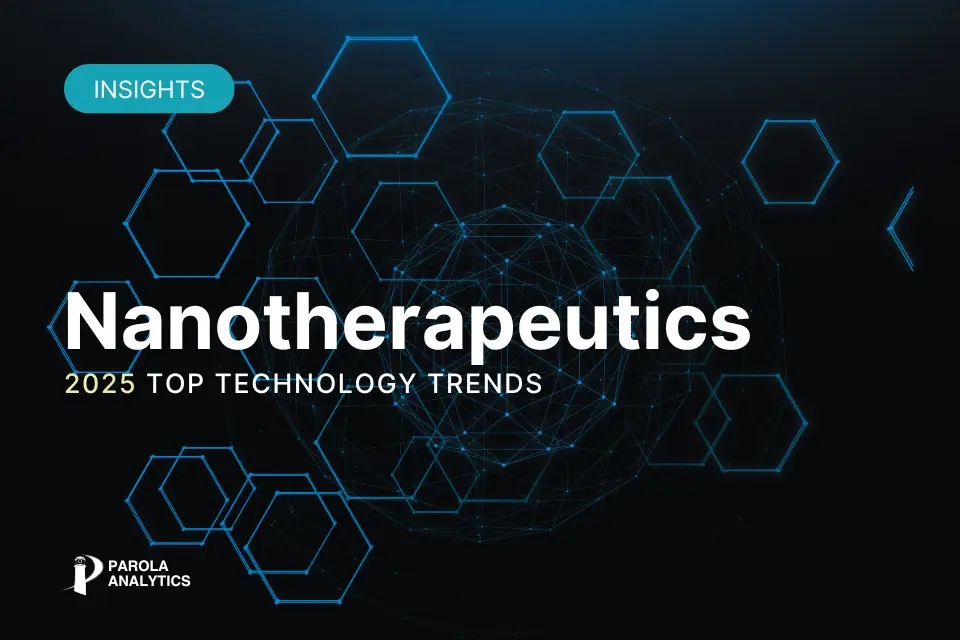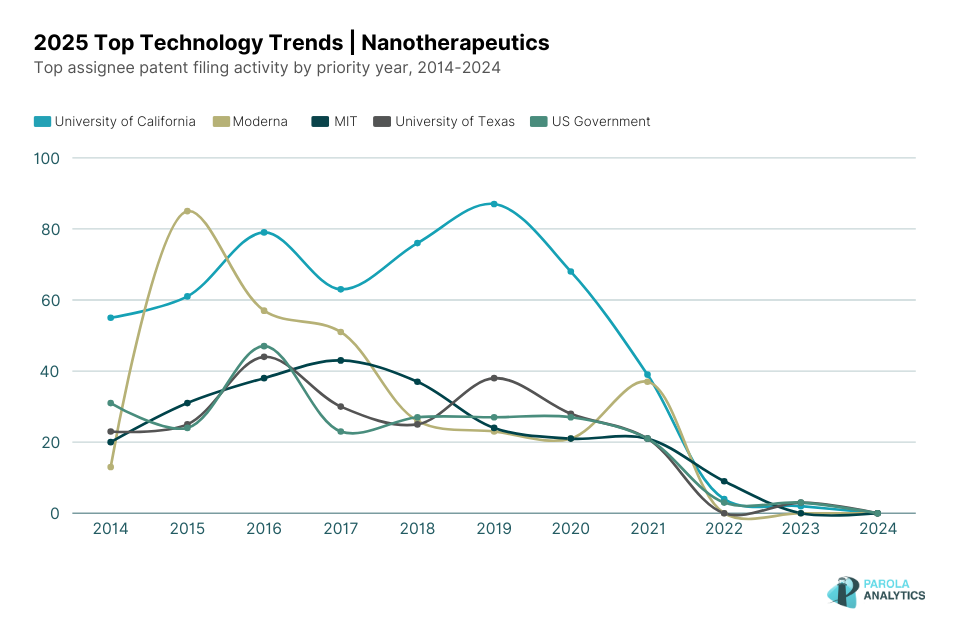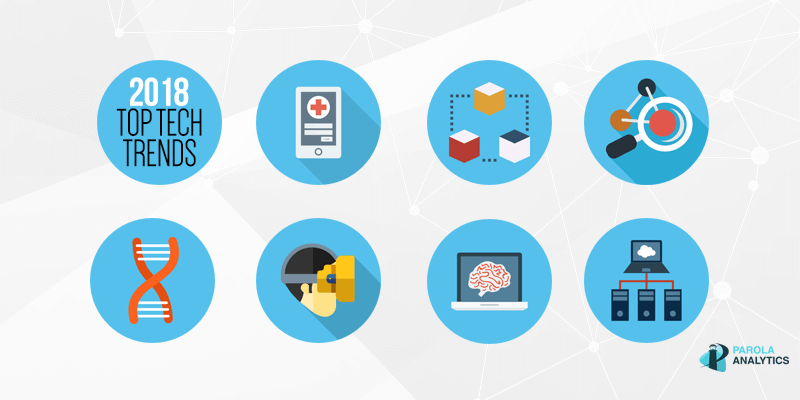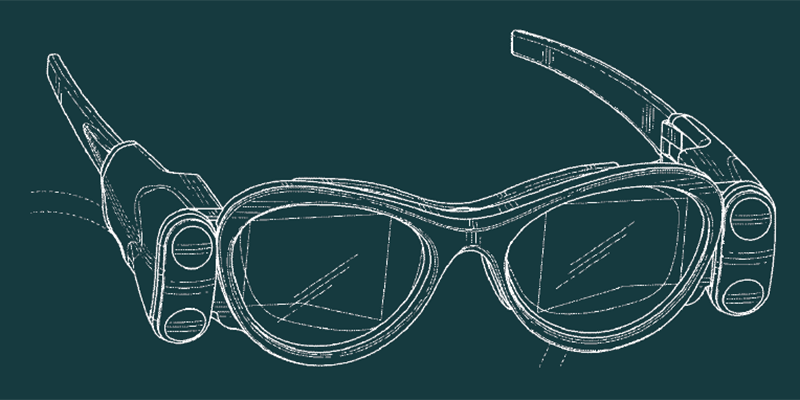Nanotherapeutics is a transformative field in modern medicine, utilizing nanotechnology to tackle some of the most challenging issues in drug delivery, gene therapy, and regenerative medicine. By operating at the nanoscale, these technologies enable precise targeting of specific cells, improved bioavailability, and reduced side effects, paving the way for personalized and efficient healthcare solutions.
In our 2025 Top Technology Trends Report, we highlighted nanotherapeutics as one of the technology areas poised to make an even greater impact this year. We explore recent innovations in the field of nanotherapeutics, key patent filing trends in the U.S., leading innovators and filers, and technology areas on our watchlist.
Download the report 2025 Top Technology Trends Report.
Patenting Activity in Nanotherapeutics
The last decade has witnessed steady growth in nanotherapeutics patent filings, with a notable peak in 2020 during the COVID-19 pandemic. There was however, a considerable decline starting 2021. The heightened focus on mRNA vaccine technology during the COVID-19 pandemic likely contributed to the peak in patent applications around 2020, though it also soon gave rise to related patent disputes over the technology.
Nanotherapeutics Top Patent Filers
The University of California leads advancements in nanomedicine, developing nanocarrier systems for targeted drug delivery and utilizing nanoparticles in immunotherapy and cancer vaccines. Researchers across all UC campuses explore diverse approaches, including biomaterials, molecular engineering, and optofluidics. These efforts drive progress in drug delivery, next-generation imaging, portable diagnostics, tissue engineering, and in vivo regeneration.
Moderna is enowned for its pioneering mRNA vaccine technologies utilizing LNPs for personalized medicine. Their platform has enabled rapid development of vaccines and therapeutics across various medical fields.
MIT advances nanotherapeutics by developing innovations like microfluidic bioreactors for CAR T-cell manufacturing. The Marble Center for Cancer Medicine drives breakthroughs in nanomedicine for cancer detection, treatment, and monitoring. Beyond therapeutics, initiatives like GO Nano and the Nano Summit reinforce MIT’s leadership in nanotechnology.
Find out more about the top assignees and other key players in our 2025 Top Technology Trends Report.
On our watchlist
The field of nanotherapeutics continues to evolve with cutting-edge developments like personalized nanomedicine, bioorthogonal nanozymes, and theranostic platforms. These innovations underscore the potential to redefine treatment paradigms, offering more effective solutions to chronic and complex diseases.
Theranostic nanoparticles
Theranostic nanoparticles merge diagnostics and therapy into a single platform, enabling targeted drug delivery, real-time imaging, and precise monitoring. Combined with AI-driven molecular profiling, they enhance treatment outcomes, particularly in cancer, neurological disorders, and chronic illnesses. Key innovators include Cristal Therapeutics and Nanobiotix, focusing on diagnosing and treating cancer and other diseases with tailored nanotheranostic solutions.
Exosome-based, exosome-mimicking, and mitochondrial-targeted nanocarriers
Exosome-mimicking nanoparticles and mitochondrial-targeted nanocarriers offer biocompatible and precise drug delivery, particularly for cancer, neurodegenerative, and metabolic diseases linked to mitochondrial dysfunction. Companies like Capricor Therapeutics and MitoRx Therapeutics lead advancements, while Cytiva supports exosome manufacturing platforms.
Smart nanorobotics for drug delivery
Smart nanorobotics and stimuli-responsive nanomaterials enable precise drug activation through environmental or external triggers, reducing off-target effects. These innovations show promise in cancer and autoimmune treatments. In nanorobotics, Nanovery has developed a DNA nanorobot platform capable of bioanalysis, while Nanobots Therapeutics is working to develop and commercialize its biocompatible nanobots with enhanced drug delivery capabilities.
Wearable and implantable nanosensors and nanopore sequencing for real-time monitoring
Wearable and implantable nanosensors, along with nanopore sequencing, provide real-time monitoring of drug levels and patient biometrics, enhancing personalized medicine. Key innovators such as Oxford Nanopore Technologies are among those providing nanopore sequencing solutions for advanced, real-time genomic insights, while NanoScent and Biolinq are developing their respective nanosensor technologies for a variety of industry applications, including healthcare, climate, chemical, and energy, among others.
Related Resources: 2025 Top Technology Trends Report








